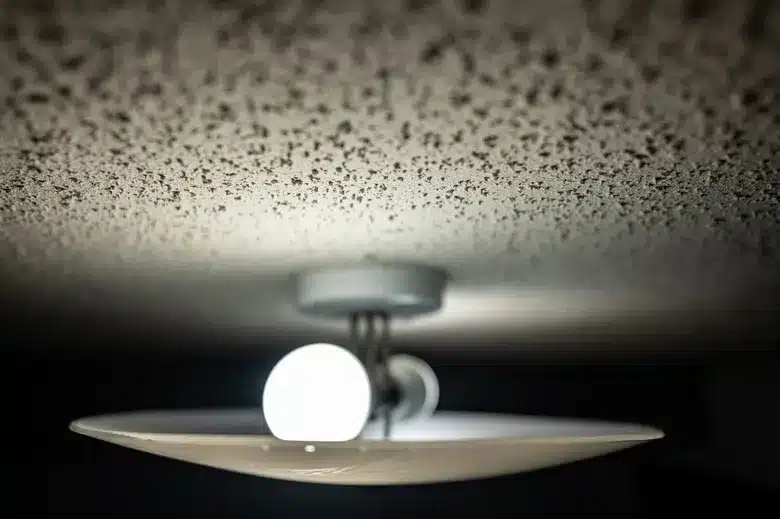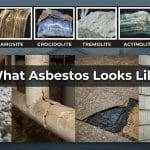Popcorn ceilings, also known as acoustic or stucco ceilings, were once a trendy feature in North American homes. Popular from the 1950s through the 1980s, they were prized for their ability to reduce noise and hide imperfections. But while they offered convenience and style at the time, many older popcorn ceilings may contain a hidden hazard: asbestos. Understanding whether your ceiling poses a risk is essential for both safety and home maintenance.
What Is a Popcorn Ceiling?
Popcorn ceilings are textured finishes created by spraying a mixture onto drywall or plaster, leaving a bumpy, stippled effect. Homeowners and builders loved them because they could quickly cover cracks, stains, or uneven surfaces. They also added sound insulation, making homes feel quieter. While the design trend has faded, many homes still carry this ceiling type. Unfortunately, depending on when the ceiling was installed, asbestos may be a concern.
Why Asbestos Was Used in Popcorn Ceilings
In the mid-20th century, asbestos was a common ingredient in many building materials. It was affordable, fire-resistant, and added durability to construction products. When mixed into popcorn ceiling spray, asbestos made the finish longer-lasting and safer against fire hazards.
Most popcorn ceilings installed before the 1980s are more likely to contain asbestos. After regulations tightened in the late 1970s and 1980s, manufacturers gradually phased it out. Still, some homes built even into the early 1990s could have asbestos-containing textures if leftover materials were used.
Health Risks of Asbestos Exposure
Asbestos is dangerous when its tiny fibers are released into the air and inhaled. Once inside the body, these fibers can embed in the lungs and cause serious long-term health problems.
Diseases linked to asbestos exposure include:
- Mesothelioma – a rare and aggressive cancer of the lung lining.
- Asbestosis – scarring of lung tissue leading to breathing difficulties.
- Lung cancer – higher risk, especially for smokers.
The greatest danger occurs when ceilings are disturbed during renovation, sanding, drilling, or even through deterioration over time. An intact popcorn ceiling may not be immediately hazardous, but damage increases the risk.
How to Identify if a Popcorn Ceiling Has Asbestos
It’s nearly impossible to tell whether a popcorn ceiling contains asbestos just by looking at it. Visual inspection is unreliable, and guessing can put you at risk.
Clues that help determine risk include:
- Year of construction: Homes built before 1980 are at higher risk.
- Condition of the ceiling: Cracks, flaking, or water damage may release fibers.
The only way to know for sure is through testing. Professional asbestos inspectors take small ceiling samples and send them to certified laboratories. This ensures accurate results without unnecessary exposure. DIY test kits exist, but disturbing the ceiling without proper protection can be hazardous.
Safe Options if Your Popcorn Ceiling Contains Asbestos
If tests confirm asbestos, the safest approach is to leave the ceiling untouched if it’s in good condition. Disturbance is what causes exposure.
Options include:
- Encapsulation: Covering the popcorn ceiling with drywall or sealants to trap fibers.
- Professional removal: Certified abatement contractors use specialized equipment and safety protocols to safely eliminate asbestos materials.
Because asbestos removal is highly regulated, homeowners should never attempt DIY removal. Not only is it dangerous, but in many areas it’s also illegal without certification.
Cost Considerations for Testing and Removal
Testing for asbestos is generally affordable, with lab analysis ranging between $50 and $150 per sample. Professional inspection costs can be higher depending on the home size and number of samples required.
Removal costs vary significantly. On average, professional popcorn ceiling asbestos removal may range from $1,000 to $3,000 for a single room and much more for entire homes. The total price depends on the ceiling area, the complexity of the job, and local disposal regulations. While costly, hiring professionals ensures compliance with health and safety standards.
Alternatives and Modern Ceiling Finishes
For homeowners who want a modern look without the risks, there are safe alternatives:
- Smooth ceilings finished with drywall compound.
- Textured plaster finishes that use asbestos-free materials.
- Decorative ceiling panels or tiles for a stylish upgrade.
These options not only eliminate safety concerns but also improve the overall value and aesthetics of a home.
Conclusion
Popcorn ceilings may look like a harmless design choice, but in many older homes, they carry the risk of asbestos exposure. Since it’s impossible to confirm without testing, homeowners should always consult professionals before attempting any renovations. If asbestos is found, leaving it intact or hiring licensed abatement experts is the safest path forward. Your health and safety—and that of your family—are worth far more than cosmetic upgrades. For trusted help, reach out to Synchron Demolition, the Popcorn ceilings in Vancouver.
FAQs
How can I tell if my popcorn ceiling has asbestos?
Only lab testing confirms it. When did they stop using asbestos in popcorn ceilings? Mostly by the early 1980s.
Is it safe to live with asbestos popcorn ceilings?
Yes, if intact and undisturbed.
How much does asbestos ceiling testing cost?
Around $50–$150 per sample.
Can I remove asbestos popcorn ceilings myself?
No, it’s unsafe and often illegal.
What if I accidentally disturb asbestos?
Leave the area and call professionals.
What are modern alternatives to popcorn ceilings?
Smooth finishes, plaster, or panels.
How long does asbestos ceiling removal take?
Usually 1–3 days per room.
Do all popcorn ceilings contain asbestos?
No, mainly older ones before 1980. Who can test my ceiling for asbestos? Licensed asbestos inspectors or labs.




